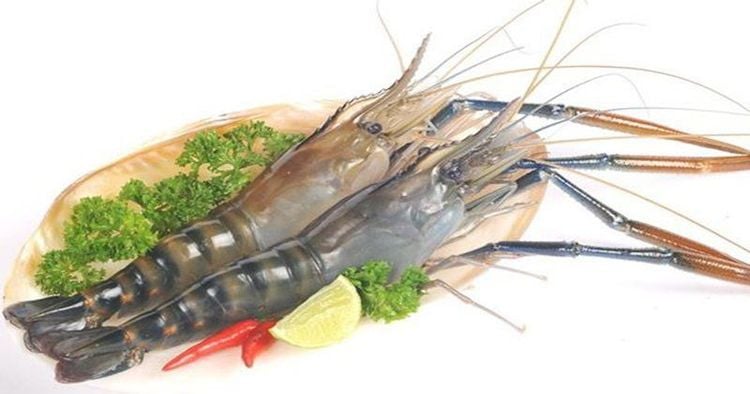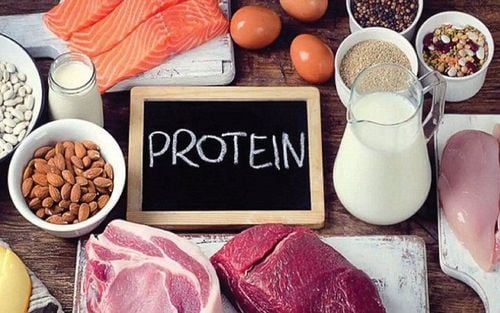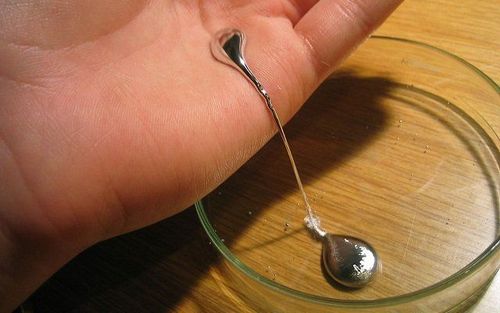This is an automatically translated article.
Fish is a healthy white meat, because they provide abundant protein, micronutrients and healthy fats. However, many types of fish, especially marine fish, contain a certain amount of mercury, causing concern for consumers. This article will give you everything you need to know about mercury in fish and shellfish.
1. What is Mercury?
Fish and shellfish are an important part of a healthy diet. A well-balanced diet that includes a variety of fish and shellfish can help protect children's heart health and growth. Therefore, women and children are the ones who should include fish or shellfish in their diets. However, most fish and shellfish contain trace amounts of mercury. So what is mercury?
In fact, mercury is a heavy metal found in nature such as: air, water and soil. This substance is released into the environment in many different ways such as: coal burning, volcanic eruptions, etc. Mercury can fall from the air and accumulate in streams and oceans and become methylmercury in country. Accordingly, people can be exposed to mercury in many ways, such as breathing in mercury vapor during mining and working in industrial environments.
MORE: Signs of mercury poisoning
Many people are exposed to mercury from eating fish and shellfish. These are animals that absorb low concentrations of mercury due to water pollution. Over time, methylmercury - the organic form of mercury will cause high toxicity and harm to human health.

Nhiễm độc thủy ngân gây ra nhiều bệnh lý về sức khỏe
Some fish species have high levels of mercury that exceed the permissible limit. The amount of mercury in fish and seafood depends on the species and the degree of contamination in its aquatic environment. In general, large, long-lived fish tend to contain the most mercury. These include shark, swordfish, fresh tuna, carp, king mackerel, tilefish from the Gulf of Mexico, and northern pike.
Larger fish tend to eat more smaller fish that contain small amounts of mercury. Accordingly, the mercury content in fish will accumulate in the body of large fish over time because this poison is difficult to eliminate outside. Mercury levels in fish are measured in parts per million (ppm). Here are the average mercury levels for different types of fish and seafood, from highest to lowest:
Swordfish: 0.995 ppm Shark: 0.979 ppm King mackerel: 0.730 ppm Bigeye Tuna: 0.689 ppm Marlin : 0.485 ppm Canned Tuna: 0.128 ppm Cod: 0.111 ppm American Lobster: 0.107 ppm Whitefish: 0.089 ppm Herring: 0.084 ppm Hake: 0.079 ppm Salmon: 0.071 ppm Crab: 0.065 ppm Haddock: 0.055 ppm Mackerel Atlantic: 0.050 ppm Crayfish: 0.035 ppm Catfish: 0.025 ppm Squid: 0.023 ppm Salmon: 0.022 ppm Anchovies: 0.017 ppm Sardines: 0.013 ppm Oysters: 0.012 ppm Scallops: 0.003 ppm Shrimp: 0.001 ppm

Tôm là hải sản có hàm lượng thủy ngân thấp
2. Effects of mercury in fish and shellfish on human health
Exposure to mercury can cause serious health problems. In both humans and animals, higher amounts of mercury can cause brain diseases. Studies also show that regular exposure to mercury increases the risk of Alzheimer's, Parkinson's, autism, and depression. In addition, mercury exposure is linked to high blood pressure, an increased risk of heart attack, and "bad" LDL cholesterol.
A study of 1,800 men found that those with the highest levels of mercury were twice as likely to die from heart disease as those with lower levels of mercury.

Nhiễm thủy ngân sau khi ăn hải sản có thể ảnh hưởng đến trí não
3. Subjects are more susceptible to mercury contamination than normal
Some people who are at high risk for mercury exposure include:
Women who are or plan to become pregnant. Because mercury can be passed from mother to child. Nursing Mothers Children An animal study showed that exposure to low doses of methylmercury during the first 10 days of conception impaired brain function in adult rats. Another study found that children exposed to mercury in the womb face an increased risk of reduced concentration, memory, language and motor function.

Phụ nữ mang thai tăng nguy cơ nhiễm thủy ngân khi ăn cá
4. How to eat fish to ensure health?
In fact, the nutritional benefits of fish will outweigh the risks of mercury exposure if you know how to prepare and eat it properly. Accordingly, each person should limit eating fish to twice a week. Also choose fish and seafood that are lower in mercury, such as salmon, shrimp, cod, and sardines. Avoid high-mercury fish such as tilefish from the Gulf of Mexico, shark, swordfish, and mackerel.
Although fish are nutritious foods, they also contain a certain amount of mercury. Therefore, you should choose foods with less mercury content and consider using it in a moderate amount, avoiding the use of nutritional imbalance and serious health effects.
Please dial HOTLINE for more information or register for an appointment HERE. Download MyVinmec app to make appointments faster and to manage your bookings easily.
References: webmd.com, healthline.com, health.harvard.edu













